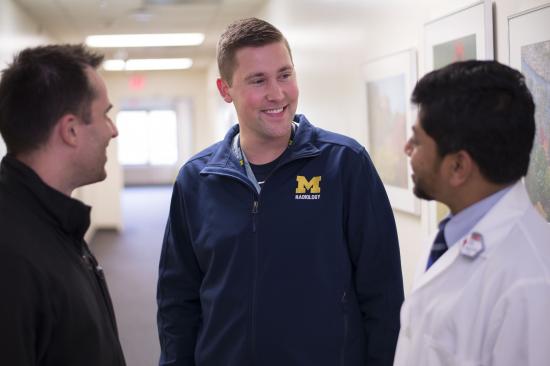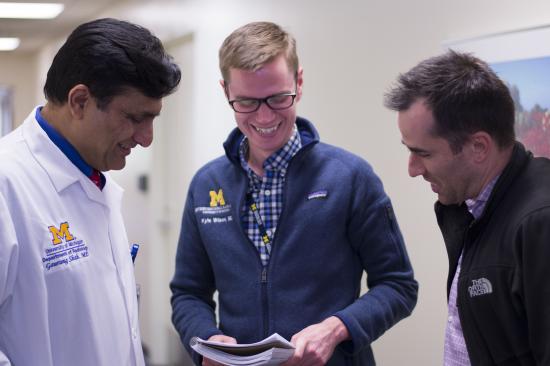We have a dynamic curriculum that is constantly evolving and being optimized based on feedback from residents and graduates. The curriculum is targeted toward different goals based on the year of training, with graduated responsibilities as residents advance through the program. The vast majority of the rotations occur at the main Michigan Medicine Campus, which helps foster a strong sense of community in the residency. In the second, third, and fourth years of the program, residents rotate at the Ann Arbor VA, which provides a valuable clinical and service opportunity. In their senior years, residents may rotate at Michigan Medicine’s satellite campuses in select subspecialties for a community practice experience.



First Year
First-year residents rotate through abdominal imaging (CT, fluoroscopy, and ultrasound), breast imaging, cardiothoracic imaging, musculoskeletal imaging, neuroradiology, nuclear medicine, pediatric imaging, and interventional radiology (including vascular and cross-sectional). These rotations are geared to introduce the junior residents to basic radiology concepts, prepare residents for junior call, and expose residents to all areas for future fellowship discernment.
Second Year
Second-year residents rotate through abdominal imaging (CT, MRI, fluoroscopy, and ultrasound), breast imaging, cardiothoracic imaging, musculoskeletal imaging, neuroradiology, nuclear medicine, pediatric imaging, and interventional radiology (including vascular and cross-sectional). Additionally, residents begin to rotate at the Ann Arbor VA, where they complete cardiothoracic, nuclear medicine, and interventional radiology rotations. These rotations are more focused on advanced modalities in each subspecialty as second year residents are prepared to enter the senior call pool. There is also devoted clinical research time in which residents have time away from clinical duties to focus on their research.
Third Year
Third-year residents continue to rotate through all of the subspecialties, spend time at the Ann Arbor VA, and continue working in the senior call pool. Most residents attend AIRP during this year. Our third-year residents receive excellent Core Exam preparation from our faculty in the months leading up to the exam.
Fourth Year
Fourth-year residents gain significant autonomy in creating their schedule to best serve their career goals with nine months of elective time. Electives are diverse within any radiology subspecialty, and many residents pursue electives in non-radiology areas such as research, medical education, and informatics. Some residents spend time on other clinical services related to their areas of interest, such as urology or pathology, and others dedicate time to dissections in the anatomy lab. Residents can also elect to spend their fourth year of radiology training in our nuclear medicine division in the pathway to dual certification.
